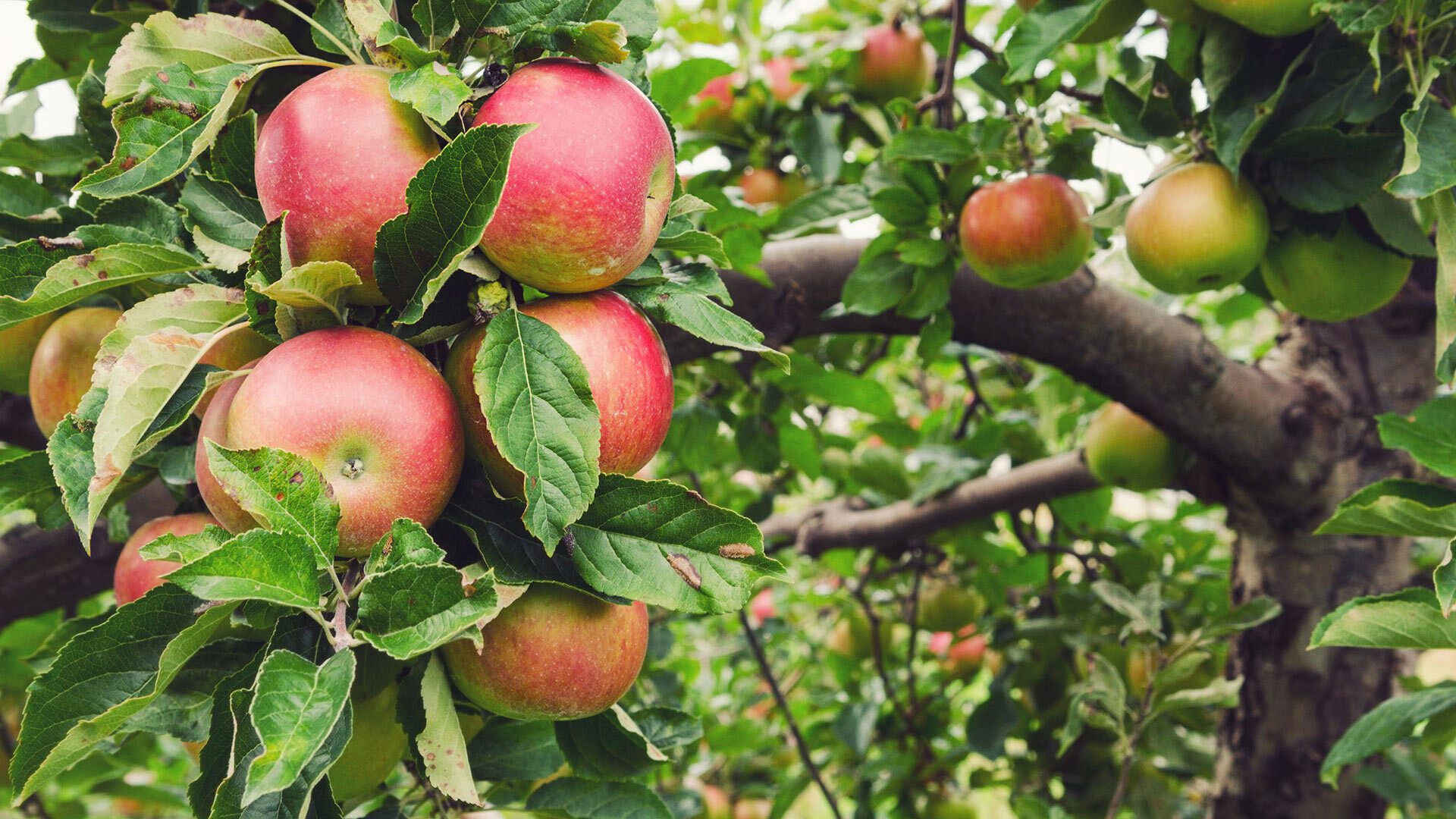- February 03, 2021
- By Samantha Watters
Mid-Atlantic apple growers often face a dilemma: Leave the fruit on the tree long enough to develop a beautiful (and marketable) red color, or harvest them earlier to optimize edibility, minimize crop losses and head off food safety issues—but be left with a load of visually unappealing apples.
Thanks to new research in UMD’s College of Agriculture and Natural Resources, farmers who grapple with our region’s sometimes-challenging weather might not have to choose for much longer. Innovative pre- and post-harvest ultraviolet light treatments, which are being tested with funds from a pair of grants, could help make up for the lack of sun that comes with an earlier harvest.
Both projects resulted directly from concerns that researchers have heard from growers in our region, who enjoy delivering some of the season’s first Honeycrisp apples to market, but struggle with increasingly rigorous industry standards for the popular crop.
“There is a big problem with getting the color that is required by the market for apples, since the 50% to 60% of red skin color is difficult to achieve in the Mid-Atlantic region because of our weather conditions,” said Macarena Farcuh, assistant professor and University of Maryland Extension specialist in the Department of Plant Science and Landscape Architecture and affiliate professor with the Department of Nutrition and Food Science. “But leaving the apples on the tree to wait for the color the way growers have been doing has a lot of consequences. The fruit can become overripe, or the apples drop and you can get 10% to 20% of losses just from the tree. Then in storage, you can get up to 50% losses from the limited storage potential of these overripe apples, which can even cause food safety issues with more potential for Listeria outbreaks.”
The U. S. Department of Agriculture National Institute of Food and Agriculture recently awarded Farcuh $300,000 to lead a team to examine how treatment of apples in storage with UV radiation can not only potentially improve coloration, but also provide protection against foodborne pathogens.
Apples are commonly stored for months in refrigeration, but this introduces some risk, said Rohan Tikekar, associate professor and Extension specialist with the Department of Nutrition and Food Science who is involved with the project.
“(W)hile washing reduces the risk of cross-contamination, it is not very effective in removing pathogenic bacteria from produce surfaces,” he said. “UV radiation is already what causes many of the pigments you see in fruits as a mechanism to protect the cellular machinery from the stress of light. The idea is that UV radiation will then not only improve color, but will also kill Listeria on the surface of apples.”
The treatment for stored apples should also up the antioxidant content of the fruit through changes in phytochemical content, Farcuh added.
In a second project supported by the Maryland Department of Agriculture Specialty Crop Block Grant Program, Farcuh will conduct a pilot program examining the effectiveness of a reflective ground cover called Extenday. Placed under apple trees about three weeks prior to the desired harvest time, it reflects the sun’s radiation back up into the tree to maximize UV contact with apples, helping to develop their color without extended time on the tree, leading to waste and potential safety issues.
“(S)afety and quality both directly intersect with fruit loss and waste,” she said. “ I feel many times we just think we have to be more efficient in producing fruit to feed a growing global population, but we forget how much fruit we are losing and wasting.”
